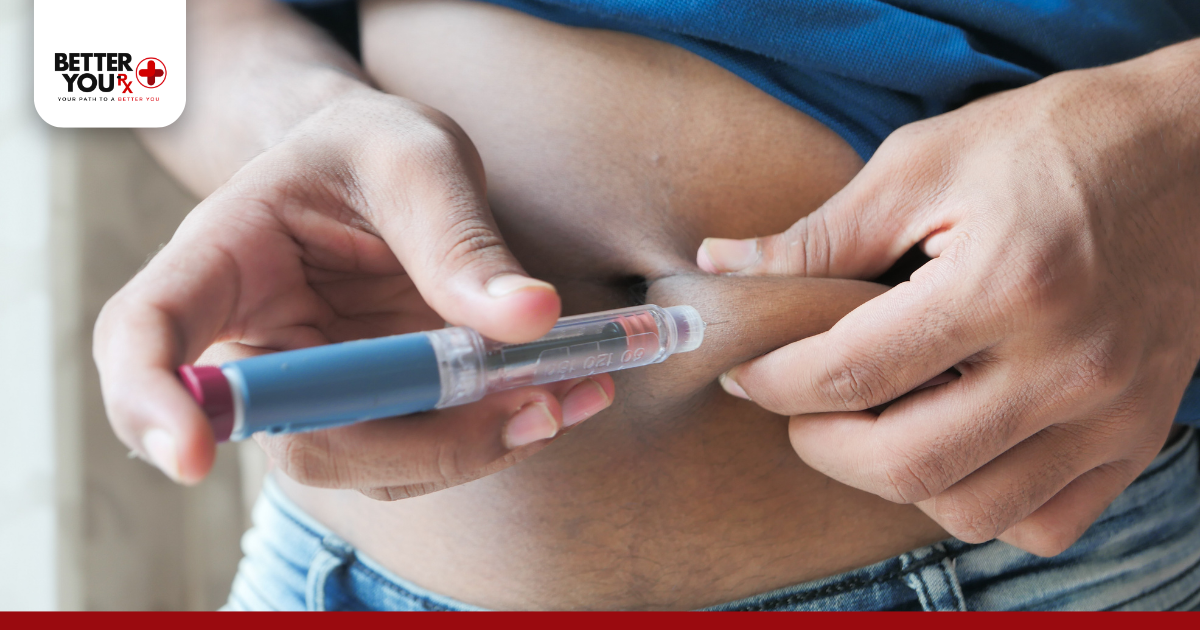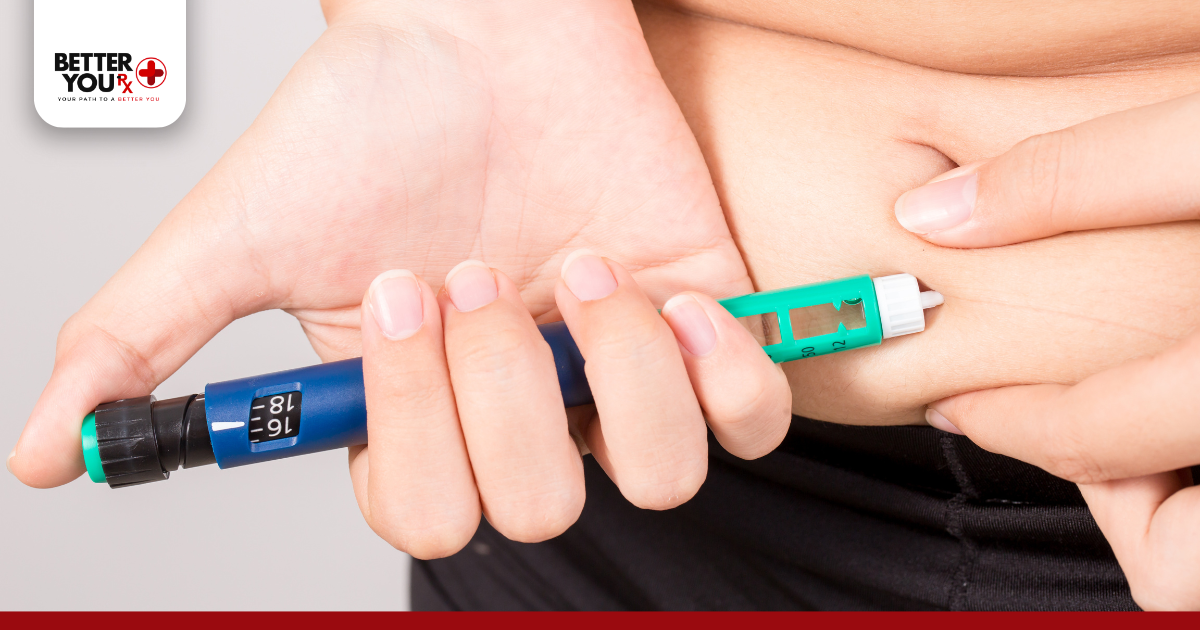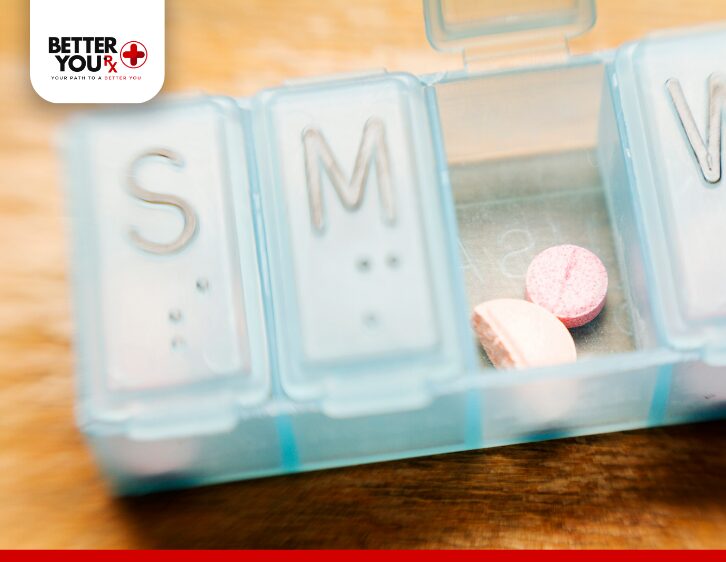Does Ozempic Help Lower Blood Pressure? What the Latest Research Says
Ozempic (semaglutide) is best known as a type 2 diabetes medication, but emerging studies show it’s doing much more—especially for those battling hypertension. The emerging connection between Ozempic and blood pressure is capturing attention in the medical community, with growing evidence suggesting that semaglutide may help lower blood pressure in addition to managing blood sugar levels.
For people living with type 2 diabetes, the possibility that Ozempic lowers blood pressure adds significant value. High blood pressure remains one of the leading causes of heart disease, especially in diabetic individuals.Early findings are encouraging: does Ozempic lower blood pressure? Research increasingly says yes, and that might change how we view this medication entirely.
“When managing chronic conditions like diabetes, choosing a medication that addresses multiple health issues—like weight, blood sugar, and blood pressure—can streamline treatment and reduce risks long-term.”
How Ozempic Works: A Triple-Action Mechanism

Ozempic contains semaglutide, a GLP-1 receptor agonist that mimics a natural hormone called glucagon-like peptide-1. Here’s what it does:
- Stimulates insulin secretion
- Inhibits glucagon (a hormone that raises blood sugar)
- Slows gastric emptying, helping you feel full longer
- Reduces appetite
The combined effects lead to:
- Better blood sugar control
- Reduced weight
- Improved cardiovascular health
These factors all play into its potential for improving or helping to lower blood pressure as well.
Explore our Ozempic product page for more information or secure ordering through a trusted online Canadian pharmacy.
Is It Safe to Take Ozempic If You Have High Blood Pressure?
The answer is generally yes. Ozempic high blood pressure concerns are minimal for most patients, and in fact, studies show the opposite: semaglutide helps reduce systolic blood pressure.
A major trial reported a 5 mm Hg average drop in systolic pressure for Ozempic users. This may seem minor, but even small reductions can significantly reduce the risk of stroke and heart attack. The heart-protective effects of semaglutide have prompted its expanded use for individuals with both diabetes and cardiovascular disease.
Patients interested in lowering both blood sugar and pressure may benefit from Rybelsus or Wegovy as well—each leveraging semaglutide in different formats and dosages.
Interested in exploring trusted medications at competitive prices? Shop from a verified Canadian pharmacy that offers a wide array of options for managing diabetes, high blood pressure, and more.
Why Does Ozempic Lower Blood Pressure? The Science Behind It

While the precise mechanism behind semaglutide lowering blood pressure remains unclear, experts believe it may result from a combination of metabolic improvements, cardiovascular support, and behavioral changes.
1. Weight Loss
Ozempic leads to significant weight loss, a major factor in blood pressure reduction. According to a 2024 study in Nature Medicine, patients using semaglutide maintained a 10% average weight loss over four years, which has a direct impact on lowering both systolic and diastolic pressure.
2. Improved Vascular Health
Studies indicate that semaglutide may enhance blood vessel function and increase vascular relaxation. This improves blood flow and reduces arterial stiffness, both of which can help to lower blood pressure.
3. Reduced Sodium Consumption
Ozempic’s appetite-suppressing effects can lead to reduced food intake, particularly processed and salty foods. This indirectly decreases daily sodium intake, which is well-known to reduce hypertension risk.
Real-World Benefits: What Doctors Are Observing

Endocrinologists like Dr. Caroline Messer have noted firsthand that patients on Ozempic frequently see improvements in blood pressure, even to the point of tapering off other medications.
“In many cases, Ozempic becomes a cornerstone medication not just for diabetes, but for overall cardiovascular wellness,” Messer noted in a 2024 review on metabolic disease treatment strategies.
These observations are supported by clinical studies. A 2024 review and meta-analysis in the European Heart Journal examined three studies involving 3,136 participants with hypertension. The analysis found that semaglutide reduced systolic blood pressure by an average of about 5 mm Hg compared to placebo.
Notably, more than 25% of patients with resistant hypertension were able to lower blood pressure medications while taking semaglutide—compared to just 3% in the placebo group.
These findings suggest that Ozempic’s benefits extend beyond glycemic control, offering significant advantages for cardiovascular health.
Can Ozempic Be Combined with Blood Pressure Medications?
Yes. But because Ozempic blood pressure effects can amplify those of existing antihypertensive drugs, physicians often need to adjust dosages. Diuretics, ACE inhibitors, beta blockers, and ARBs may interact with semaglutide in ways that could cause blood pressure to drop too low.
If you’re using medications like:
…it’s important to monitor blood pressure closely under a healthcare provider’s guidance.
When Should You Be Cautious With Ozempic?
While generally safe, Ozempic should be used with care in the following scenarios:
- If you’re on insulin or sulfonylureas, as these may lead to hypoglycemia
- During gastrointestinal distress, which can cause dehydration and worsen blood pressure control
- One week before surgery, to avoid delayed gastric emptying risks
For more personalized care strategies, our Contact page is always open to help.
Other GLP-1 Medications That Influence Blood Pressure
Ozempic isn’t the only GLP-1 medication making waves. Consider these alternatives:
- Rybelsus: Oral semaglutide with similar effects
- Wegovy: Higher-dose semaglutide—can Wegovy cause a lower blood pressure? Yes, and it has shown comparable cardiovascular improvements
- Trulicity: Weekly injectable with heart-protective properties
- Mounjaro: Dual-action GLP-1/GIP receptor agonist approved for type 2 diabetes and obesity management
These medications are available from our trusted Canadian online pharmacy—backed by expert consultation and competitive pricing.
Final Thoughts: A Dual-Impact Therapy Worth Considering
There’s growing consensus in the medical community that Ozempic is more than a diabetes drug—it’s a multifaceted therapy with broad cardiovascular implications. By tackling multiple risk factors like weight, blood sugar, and lower blood pressure, Ozempic helps patients streamline their treatment strategies and potentially reduce the number of medications they take.
For individuals managing hypertension alongside type 2 diabetes—or those at elevated risk—Ozempic may offer life-changing advantages. But, as with all powerful medications, it’s vital to work closely with a healthcare provider to tailor its use to your unique needs.
If you’re ready to explore semaglutide-based therapies like Ozempic, Wegovy, or Rybelsus, the team at Better You Rx is here to support your journey with affordable access and expert guidance.
Frequently Asked Questions (FAQs)
1. Does Ozempic lower blood pressure directly or indirectly?
Ozempic appears to lower blood pressure both directly by improving vascular function and indirectly through weight loss and reduced sodium intake.
2. Can I take Ozempic with my blood pressure medication?
Yes, but dosage adjustments may be necessary. Always consult your healthcare provider to avoid hypotension or interactions.
3. Is it safe to take Ozempic if I don’t have diabetes but want to manage blood pressure?
While not its primary indication, Ozempic is sometimes used off-label for weight and cardiovascular benefits in non-diabetic patients. Discuss this approach with your doctor.
4. Can Wegovy cause lower blood pressure like Ozempic?
Yes, Wegovy (a higher-dose semaglutide) can have similar blood pressure-lowering effects.
5. What’s the best place to buy Ozempic online safely?
Trusted sources like this Canadian pharmacy online ensure quality, affordability, and prescription verification.
Key Takeaways
- Ozempic can lower blood pressure—especially in people with type 2 diabetes and cardiovascular risks.
- The effect is largely attributed to weight loss and vascular improvements.
- Combination with blood pressure medications is usually safe but requires monitoring.
- Alternatives like Wegovy and Trulicity also support cardiovascular health.
- Always buy from a reliable Canadian online pharmacy like Better You Rx.





































